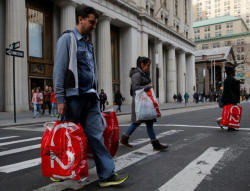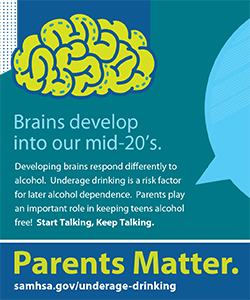|
U.S. economic growth
revised higher, boosted by consumer spending
 Send a link to a friend
Send a link to a friend
 [March 31, 2017]
By Lucia Mutikani [March 31, 2017]
By Lucia Mutikani
WASHINGTON
(Reuters) - U.S. economic growth slowed less than previously reported in
the fourth quarter as robust consumer spending provided a boost that was
partially offset by the largest gain in imports in two years.
Gross domestic product increased at a 2.1 percent annualized rate
instead of the previously reported 1.9 percent pace, the Commerce
Department said on Thursday in its third GDP estimate for the period.
The economy grew at a 3.5 percent rate in the third quarter. Despite the
upward revision to the fourth quarter, the economy grew only 1.6 percent
for all of 2016, its worst performance since 2011, after expanding 2.6
percent in 2015.
There are signs that economic activity slowed further in the first
quarter, with the trade deficit widening in January and both consumer
and construction spending weakening.
With the labor market near full employment, the data likely understates
the health of the economy - GDP also tends to be weaker in the first
quarter because of calculation issues the government has acknowledged
and is trying to resolve.

"Some of this softness is due to seasonal adjustment issues that will
reverse later in the year," said Gus Faucher, deputy chief economist at
PNC Financial in Pittsburgh. "Consumer spending will lead growth thanks
to higher incomes from more jobs and rising wages."
The Atlanta Federal Reserve is forecasting GDP rising at a rate of 1.0
percent in the first quarter.
Though the moderate growth pace has been sufficient to lower
unemployment, it is a challenge to President Donald Trump's goal of
boosting annual growth to 4 percent by slashing taxes, increasing
infrastructure spending and cutting regulations.
The Trump administration has offered few details on its economic
policies, but both business and consumer confidence have surged
following the businessman-turned-politician's electoral victory last
November.
After last week's failed attempt by Republicans in the U.S. House of
Representatives to repeal the Obama administration's 2010 healthcare
law, economists say Trump faces a tough road ahead implementing his
pro-growth agenda.
"The primary question is whether the next few years will resemble the
last several years with growth of around 2 percent or whether better
days lie ahead," said Jim Baird, chief investment officer at Plante
Moran Financial Advisors in Kalamazoo, Michigan.
The dollar was slightly stronger against a basket of currencies, while
prices for U.S. Treasuries fell. U.S. stocks were trading higher.
Economists polled by Reuters had expected fourth-quarter GDP would be
revised up to a 2.0 percent rate.
TIGHTENING LABOR MARKET
The government also reported that corporate profits after tax with
inventory valuation and capital consumption adjustments increased at an
annual rate of 2.3 percent in the fourth quarter after rising at a 6.7
percent pace in the previous three months.
[to top of second column] |

People cross Broadway with shopping bags in Manhattan, New York
City, U.S. December 27, 2016. REUTERS/Andrew Kelly

Profits were held back by a $4.95 billion settlement between the U.S. subsidiary
of Volkswagen AG and the U.S. federal and state governments for violation of
environmental regulations. As a result, the economy grew at only a 1.0 percent
rate when measured from the income side, braking sharply from the 5.0 percent
pace of growth in the third quarter.
Growth in consumer spending, which accounts for more than two-thirds of U.S.
economic activity, was revised up to a 3.5 percent rate in the fourth quarter.
It was previously reported to have risen at a 3.0 percent rate.
Consumer spending is being supported by a tightening labor market. A separate
report from the Labor Department on Thursday showed initial claims for state
unemployment benefits fell 3,000 to a seasonally adjusted 258,000 for the week
ended March 25.
Claims
have now been below 300,000, a threshold associated with a healthy labor market
for 108 straight weeks. That is the longest stretch since 1970, when the labor
market was smaller.
Domestic demand increased at a robust 3.4 percent rate in the fourth quarter,
the fastest pace in two years.
Some of the increase in demand was satiated with imports, which increased at a
9.0 percent rate. That was the biggest rise since the fourth quarter of 2014 and
was an upward revision from the 8.5 percent growth pace reported last month.
Exports fell more than previously estimated, leaving a trade deficit that
subtracted 1.82 percentage point from GDP growth instead of the previously
reported 1.70 percentage points.

Robust domestic demand and import growth meant stronger inventory investment
than previously estimated. Businesses accumulated inventories at a rate of $49.6
billion in the last quarter, instead of the $46.2 billion reported last month.
Business investment was revised lower to reflect a more modest pace of spending
on intellectual property, which increased at a 1.3 percent rate instead of the
previously estimated 4.5 percent pace.
(Reporting by Lucia Mutikani; Editing by Paul Simao)
[© 2017 Thomson Reuters. All rights
reserved.] Copyright 2017 Reuters. All rights reserved. This material may not be published,
broadcast, rewritten or redistributed. |